The Lowdown
I am going to continue using the DNA Vibe Jazz Band Live. I know it can’t hurt, and it does seem to help, even if not for sustained periods of time, But that just means I’m more likely to keep using it. Because I can do treatments in my home and on my schedule, I’m more likely to keep using it than I would be if I continued going to the therapeutic center.
Overall
Pros
- Small, portable, and powerful
- Gives you the ability to do therapy at home without the need to travel pay for each therapeutic session
- Works with the app so you can customize your therapy
- Comes with a 60-day money-back guarantee so you can give it a shot and if it doesn’t work for you you’ve lost nothing
Cons
- More medical studies on RLT efficacy need to be done
- Upfront expense is not insignificant, but if you do find that it is helping, the device could soon pay for itself without the time and monetary commitment that comes with going to an RLT center
I have rheumatoid arthritis and am well-versed in the resulting aches and pains that come with it. In January, I developed significant knee pain and tried red light therapy, and while I’m not sure if that sped up my recovery, it certainly didn’t hurt. That made me curious about the DNA Vibe Jazz Band Live, which Zek has also tried; it conveniently offers red light therapy (RLT) for your aches and pains right at home.
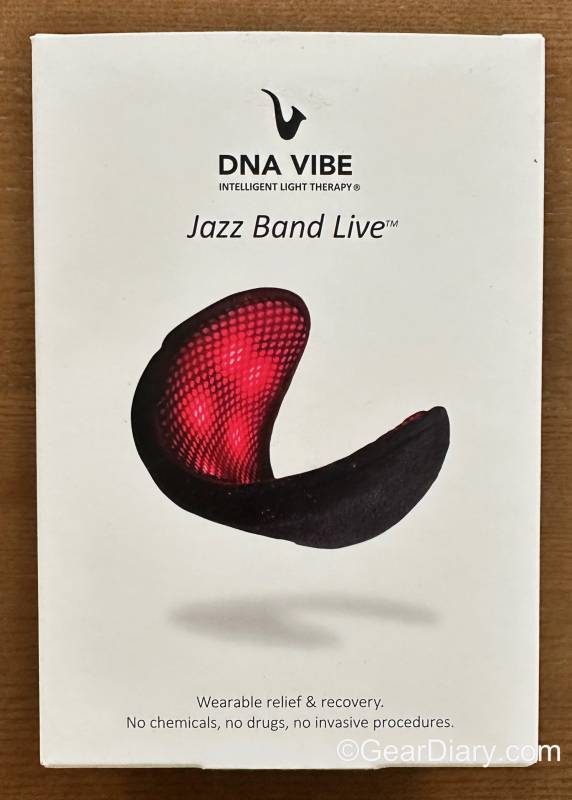
The DNA Vibe Jazz Band Live is marketed as a therapeutic device that, according to the company, helps reduce pain, allows faster recovery from joints and muscles that have been overused, and, in the process, enhances performance.
As they explain, this is accomplished using a combination of infrared light, micro-vibration technology, and magnets.
Let’s look at the device and what it promises to do. I’ll also describe my experience using the device thus far, and while I make no medical claims here, I hope my experience helps you determine if this might be helpful to you.
According to a medically reviewed article on Forbes:
Red light therapy may be beneficial when it comes to improved skin appearance, wound healing and pain management, according to current research.
Red light therapy uses the therapeutic application of light energy primarily to aid in the healing of skin and muscular conditions, such as scarring and tendonitis.
By exposing the body to a low wavelength of red light (620 to 750 nanometers), red light therapy stimulates increased energy production in the cells, which may lead to myriad health benefits.
As DNA Vibe explains, their technology employs RLT but takes it a few steps father:
Conventional light therapies have been around for over 50 years (since 1967). They’ve been shown to be effective and safe through numerous double-blind clinical studies and have been FDA approved for decades.
While they are known to work, few (if any) providers understand how or why they work. Until DNA Vibe.
Our Intelligent Light Therapy technology is based on the underlying sciences and DNA Vibe’s proprietary research into the relationship between genomics and wave-particle physics.
From this point of view, conventional light therapies come up short and tend to be relatively expensive, complicated, and clumsy. Leveraging our unique understanding of the science, DNA Vibe’s technology is surprisingly affordable, easy to use, wearable, and above all, intelligent.
To that end, DNA Vibe says:
The Jazz Band uses safe and effective levels of red light, near-infrared, magnetic, and micro-vibration. The exact wavelengths are proprietary, but here is a brief table of ranges:
- Red light: 650-675 nm
- Near-infrared: 825-850 nm
- Magnetic: 45-55 micro Tesla
- Micro-vibration: 225 Hz

The DNA Vibe Jazz Band Live makes RLT accessible anytime and almost anywhere. Thanks to its design, the device can be used on almost any part of the body, including your back, neck, knees, elbows, and wrists.
Inside the box, you’ll find the DNA Vibe Jazz Band Live light therapy device, two elastic Velcro straps to secure the device on any part of the body, and an AC adapter with an innovative magnetic connector.
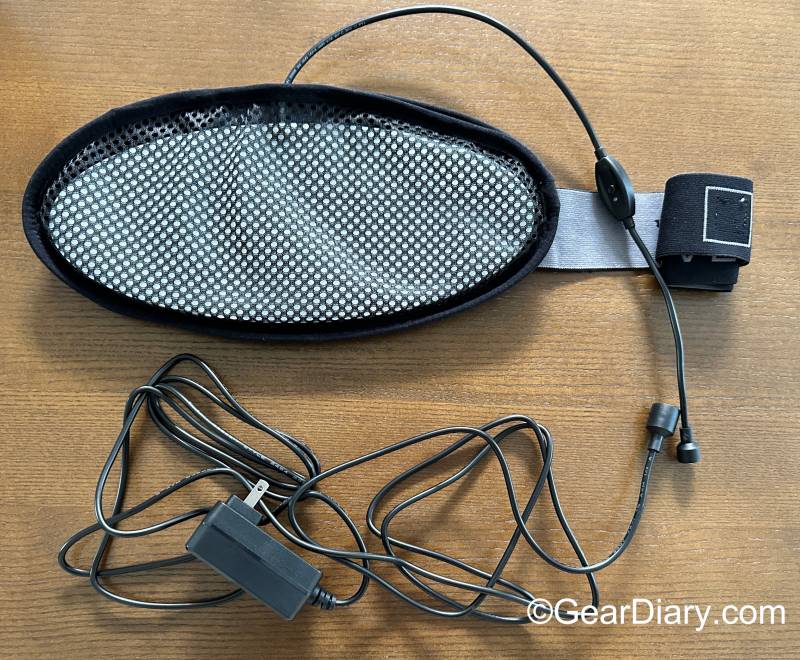
I particularly appreciate the DNA Vibe Jazz Band Live’s magnetic connector since I imagine everyone using this device will, at some point, get up and walk away without realizing it is still connected.
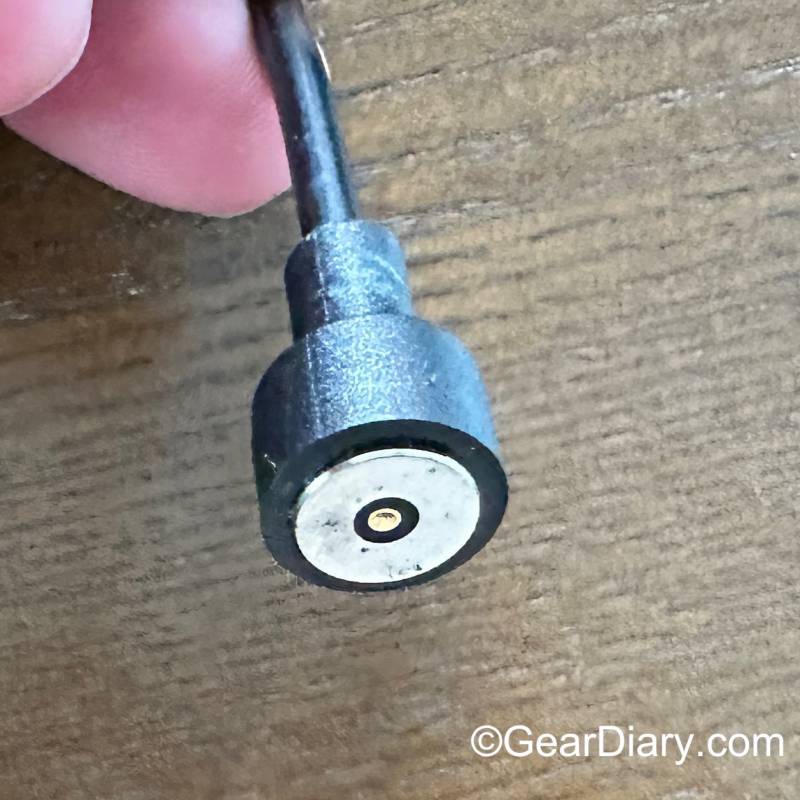
Having the magnet connecting the device to the AC adapter means that, when that eventually happens, the cord won’t get caught. Instead, like Apple’s MagSafe chargers on their laptops, the cable will simply and safely separate.
The main device is an oval shape housed in a neoprene cover. The therapy device is held inside the neoprene cover using a strategically placed Velcro strap.
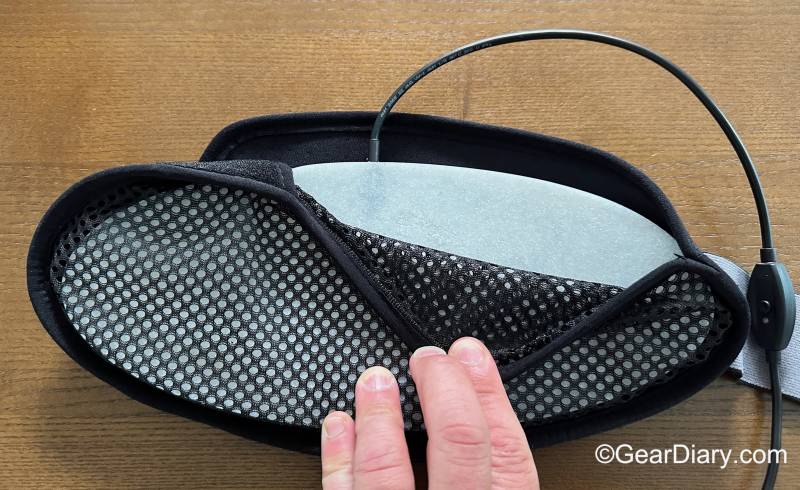
A small cord extends from the DNA Vibe Jazz Band Live and ends with one side of the magnetic connector. The other is on the cable attached to the AC adapter.
When the two are brought into proximity, they align perfectly, connect and let the power flow to the therapy device.
The portion of the cable attached to the DNA Vibe Jazz Band Live also has a small controller with a single button. It allows you to toggle through the four main functions of the device itself.
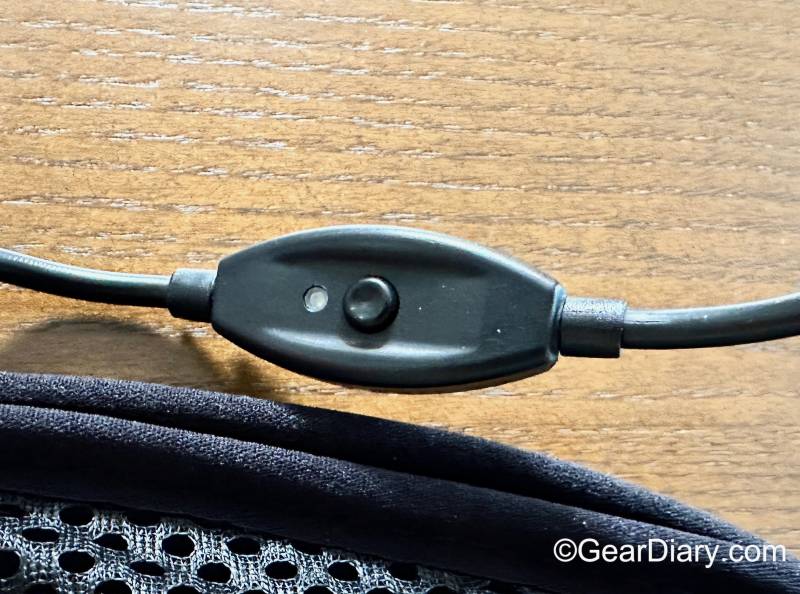
It’s worth noting that while the AC adapter and magnetic connectors are brilliant, the company also sells a $79.95 Mobility Power Pack, so you can use the DNA Vibe Jazz Band Live even when an AC outlet is unavailable.
Before you get started with the device, you’ll want to download the DNA Vibe Jazz Band Live app. It’s a free companion app that allows you to customize and control your therapy sessions more precisely.
We’ll come back to that in a moment.
To use the device, you’ll place it on the troublesome area of your body and use one or both of the straps to secure it. I use one strap for my knee and neck, but both straps are required for my lower back.
The side of the DNA Vibe Jazz Band Live that houses the lights should be placed directly on the problematic area of your body with nothing between your skin and the lights. Once the device is securely in place, you’ll fire up the app.
When you first download the app and turn on the device, you must make a Bluetooth connection. This happens almost immediately, and from there, you are ready to start therapy.
While you can use the DNA Vibe Jazz Band Live using only the button on the cable, the app adds control of several important functions.
It lets you set a timer so you don’t have to think about how long your therapy session will take. The company recommends you use the device twice daily for 20-30 minutes.
The company also notes:
Customers report best results when using it twice a day for 20-30 minutes per session for at least 14 consecutive days (or ongoing – some keep it up, and others back into a maintenance mode, and others use it as needed). While we don’t have a strict maximum, we recommend not more than 2 hours per day per area.
After about two hours of use per day in the same location, we generally start to see results plateau. Therefore, we don’t recommend using the Jazz Band for more than two hours per day in the same location. Mix it up and try your Jazz Band on new areas if you’re feeling the Vibe!
The app also lets you individually adjust the intensity of the RLT, near-infrared, and magnetic therapy.
Sliders for each allow you to set the intensity anywhere from zero and 10. There is also a helpful “how-to guide,” so answers to important questions are right at your fingertips.
My knee has been bothering me lately, so I’ve been trying the device on it. I place the DNA Vibe Jazz Band Live directly on the spot that’s been troubling me the most, and then I used the included Velcro straps to secure it tightly in place.
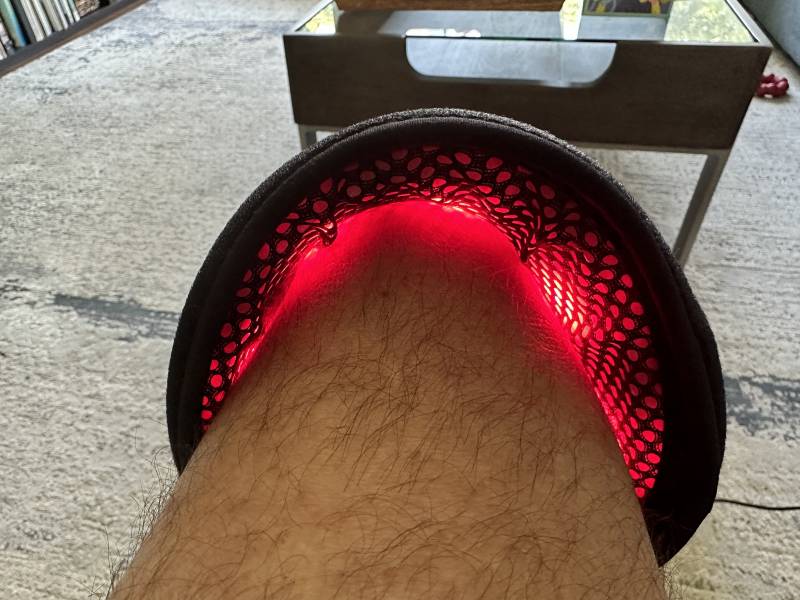
I turned all the therapies up to maximum using the app. Go big or go home. Right?! I then started the session and sat down to read a book.
The vibration coming from the device felt rather good, although the sound during my first session was a bit distracting. During future sessions, I opted to have noise-canceling headphones on to better concentrate on something productive while using the device.
I’ve found that the vibration and slight heat produced by the DNA Vibe Jazz Band Live feels good during sessions. Still, I’m not sure that I am noticing a significant difference, although, anecdotally, my knee does feel a bit better immediately following the sessions.
I find it disappointing that the DNA Jazz Band site doesn’t include any published scientific literature from tests that specifically used their device. However, some medically backed tests have shown the efficacy of RLT; it’s obvious that more research is needed.
It’s hard to say if using the DNA Vibe Jazz Band Live will have long-term positive effects or if it is just offering a band-aid when I use it at best.
And while I wouldn’t be willing to say that using this device has made any lasting, significant improvements, I do know that plenty of people swear by RLT. I suspect that part of the reason my knee recovered in January was because of the RLT I did.
With that said, I found that receiving RLT on an outpatient basis earlier this year was costly and inconvenient; I had to make time to go to an RLT center and pay for each session. With this device, RLT is available to me whenever and wherever I need it, without the need to take time out of my day for travel or the additional expense of having it administered in a professional setting.
I am going to continue using the DNA Vibe Jazz Band Live. I know it can’t hurt, and it does seem to help, even if not for sustained periods, But that means I’m more likely to keep using it. Because I can do treatments in my home and on my schedule, I’m more likely to keep using it than I would be if I continued going to the therapeutic center.
If you have joint or muscle pain, you should, of course, see a doctor. If the issue is nothing more than a bit of inflammation or overuse, it can’t hurt to try the DNA Vibe Jazz Band Live. They offer a 60-day money-back guarantee, so there’s nothing to lose, and it may help.
The DNA Vibe Jazz Band Live sells for $279; it is available directly from the manufacturer and other retailers, including Amazon.
Source: Manufacturer supplied review sample
What I Like: Small, portable, and powerful; Gives you the ability to do therapy at home without the need to travel pay for each therapeutic session; Works with the app so you can customize your treatment; Comes with a 60-day money-back guarantee so you can give it a shot and if it doesn’t work for you you’ve lost nothing
What Needs Improvement: More medical studies on RLT efficacy need to be done; Upfront expense is not insignificant, but if you do find that it is helping, the device could soon pay for itself without the time and monetary commitment that comes with going to an RLT center

Be the first to comment on "DNA Vibe Jazz Band Live Review: Promises Red Light Therapy at Home, without the Hassle, Expense, and Travel of Red Light Therapy Centers"